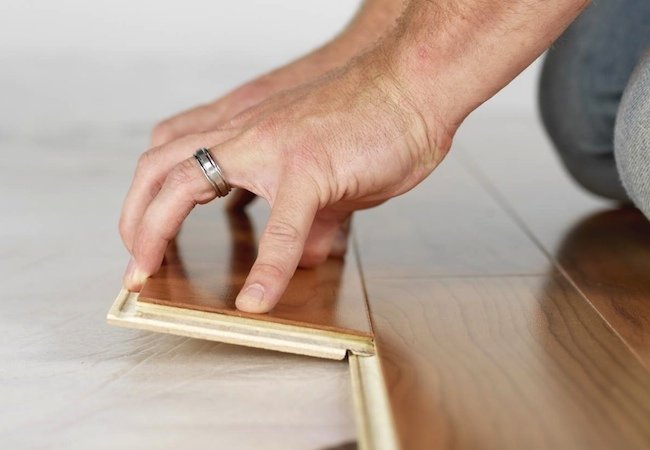Not all floating wood floors are alike. Many use the same design principles and appear to be of the same quality, but the reality is that certain types of engineered wood floors are better than others.
Which one is best for your home? Should you opt for the modern click-lock floating wood floors or stick with the tried and true tongue and groove design? Both styles have advantages and disadvantages, and your project details may be better suited to one over the other. Take the two most popular styles of engineered hardwood – click lock or tongue & groove. Most older product lines were made with the tongue and groove styling, a byproduct of solid hardwood flooring that requires adhesive to keep the planks together when performing a floating install. On the other hand, we have the click lock design, convenient for the DIY flooring crowd and allows for much faster installation in most circumstances.
Pros and Cons of Click Lock Floating Wood Floors
The click lock design operates like a tongue and groove, although in this case, the “tongue” locks into the “groove” without the need for adhesive. It may be two hooked shapes that snap together or another type of patented design. Some click-lock models have a tighter fit, but remember that a certain amount of flexibility is required to ensure the floor won’t buckle or warp with natural movement.
Pros
This style of engineered hardwood is the easiest to find and comes in a wide range of wood species, finishes, and widths. Click lock wood floor styles are available in thicknesses anywhere from 3/8” to 5/8”. All of these can be floated on a well-prepared subfloor, and installation is fast and simple thanks to the shape of the floorboards.
The reason many choose the click lock system is to avoid the mess of using glue as the interlocking system will secure the planks together. You only need a steady hand and a keen eye to snap these floorboards together, along with accurate measurements and a heap of patience, of course. Stop worrying about how much glue to put on, how to get it spread evenly, and how to get it out from under your fingernails. With click lock, you can leave glue behind.
In addition, repairs are also easier with this system, since you can remove the damaged planks without worrying about destroying the locking “tongues.” Because the edges of this wood flooring are precisely formed by machinery, snapping and unsnapping them is just as precise and can be done with a minimal loss.
Cons
Click-lock floors are more limited in installation options. Specifically designed for floating, this style of floor requires more transition moldings and the investment of a higher sound-deadening underlayment.
Depending on the style of the click system, some click lock floors may be difficult to fully engage therefore separating with prolonged use. For a high-quality lock system look for patented technology such as Unilock or Valinge.
It looks as if opting for click-lock floating wood floors is a better idea for floating floors than investing in tongue and groove-engineered hardwood. But will it work well in any room or will tongue and groove still prove best for certain projects? We’ll have a closer look at the benefits and disadvantages of tongue and groove wood floors in part 2.

